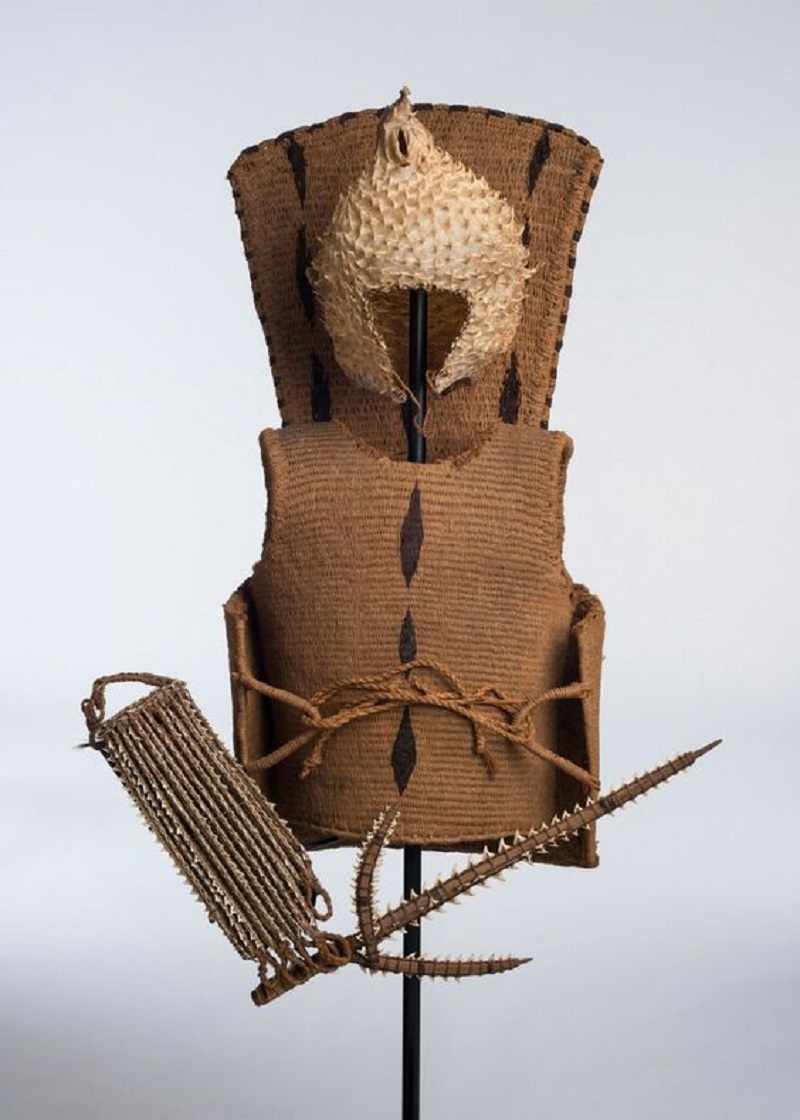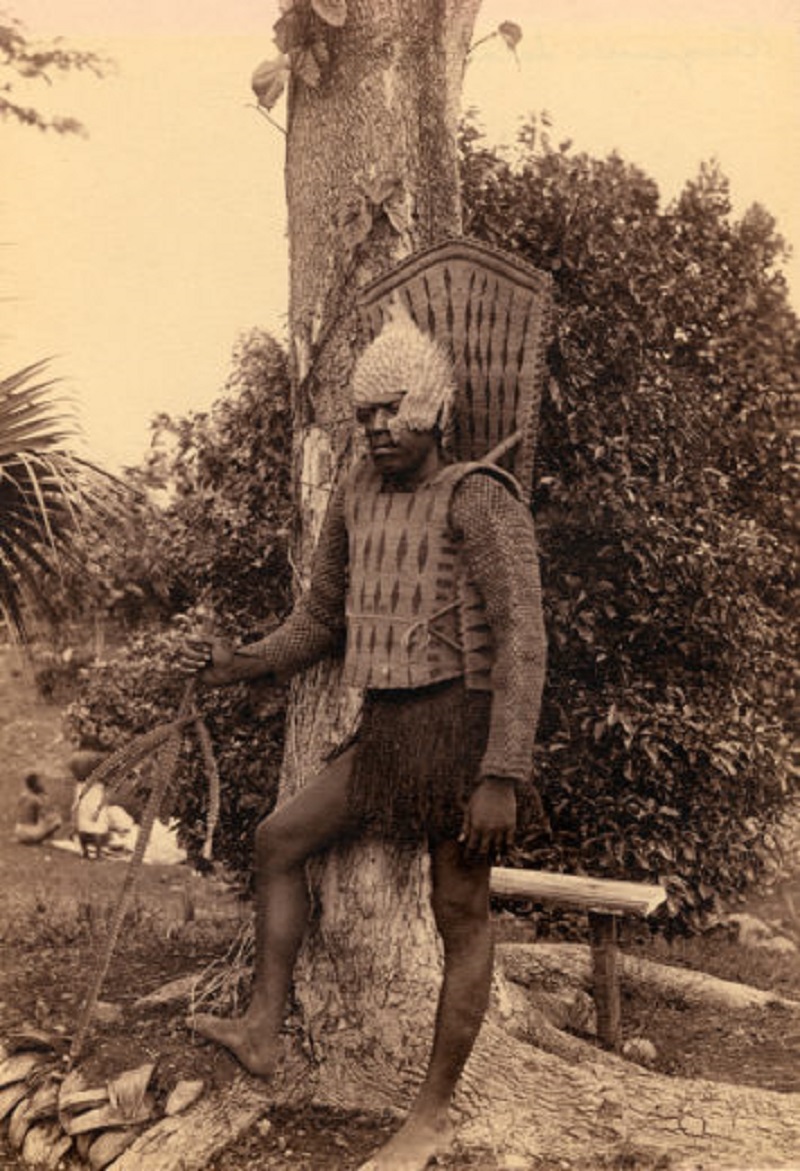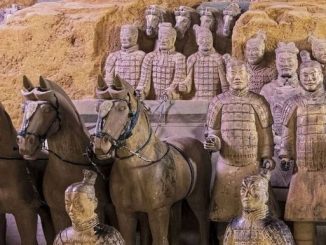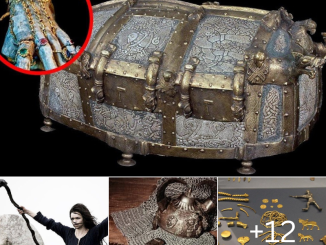In the vast expanse of the Pacific Ocean lies the archipelago of Kiribati, home to a rich and storied tradition of warfare and martial prowess. Among the most iconic artifacts of Kiribati’s warrior culture are the distinctive armor and weaponry crafted by skilled artisans of the late 19th century. One such example is the porcupine fish helmet and shark-tooth sword, which served as essential components of Kiribati warrior attire. Join us as we delve into the fascinating world of Kiribati warriors, exploring the craftsmanship, significance, and historical context of these remarkable artifacts.

Craftsmanship of Kiribati Warrior Armor
Kiribati warrior armor was a marvel of ingenuity and resourcefulness, crafted from coir—a tough fibrous material derived from coconut trees. This hard-harvested material was meticulously woven into durable and sturdy armor, capable of withstanding the rigors of battle. The porcupine fish helmet, adorned with sharp spines, served as both a protective headgear and a symbol of intimidation on the battlefield. Similarly, the shark-tooth sword, fashioned from thick coconut wood and lined with dozens of shark teeth, was a formidable weapon capable of inflicting devastating wounds on adversaries.
Significance in Warfare
In the turbulent landscape of late 19th-century Kiribati, warfare was a central aspect of social and political life. Warriors played a crucial role in defending their communities, asserting territorial claims, and asserting dominance over rival clans. As such, the armor and weaponry of Kiribati warriors were not merely utilitarian tools but symbols of honor, courage, and tribal identity. The porcupine fish helmet and shark-tooth sword, with their fearsome appearance and lethal capabilities, instilled fear in enemies and bolstered the morale of allies.
Impact on Kiribati Society
The craftsmanship and symbolism embodied in Kiribati warrior armor had a profound impact on the social fabric of Kiribati society. Warriors occupied a revered status within their communities, admired for their strength, skill, and valor in battle. The production of armor and weaponry served as a means of preserving traditional knowledge and craftsmanship, passed down through generations of artisans. Furthermore, the rituals surrounding warfare, including the donning of ceremonial attire and the recitation of ancestral chants, reinforced cultural values and beliefs.
Legacy and Preservation
Despite the passage of time, the legacy of Kiribati warrior armor endures as a testament to the resilience and ingenuity of Pacific Island cultures. Today, these artifacts are revered as symbols of Kiribati’s rich cultural heritage, preserved in museums and private collections around the world. Through ongoing research and conservation efforts, scholars and enthusiasts continue to unravel the mysteries of Kiribati’s warrior tradition, shedding light on its significance in the broader context of Pacific Island history.

In conclusion, the porcupine fish helmet and shark-tooth sword of Kiribati warriors stand as poignant reminders of a bygone era of martial prowess and cultural pride. These artifacts not only showcase the skill and craftsmanship of Kiribati artisans but also embody the resilience and ingenuity of a people shaped by the challenges of their environment. As we reflect on the legacy of Kiribati warrior armor, let us honor the enduring spirit of Pacific Island cultures and strive to preserve their heritage for generations to come. Through archaeology and historical inquiry, we gain invaluable insights into the complexities of human experience and the rich tapestry of global history.
Read more : https://model.icusocial.com/author/bspvt01/?utm_source=KC&utm_medium=H&utm_id=3


